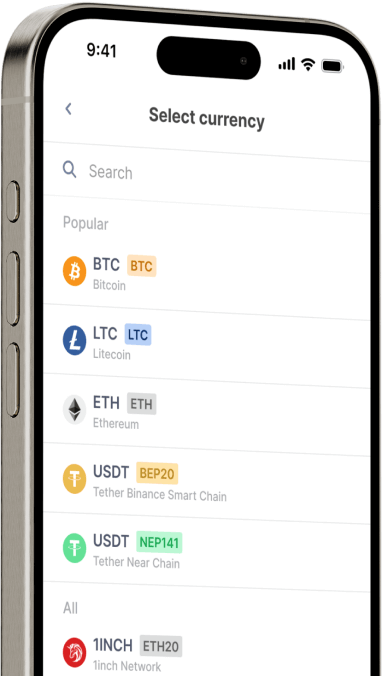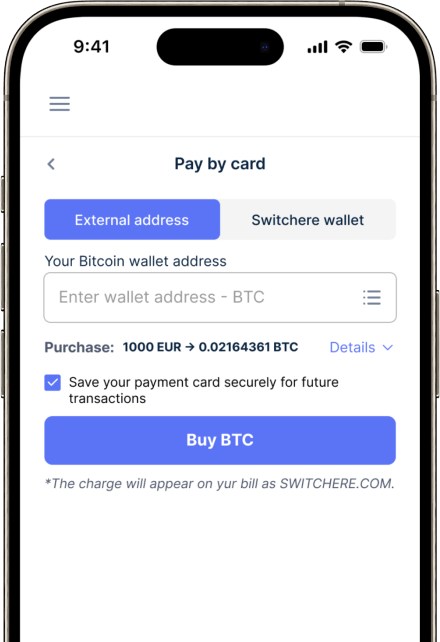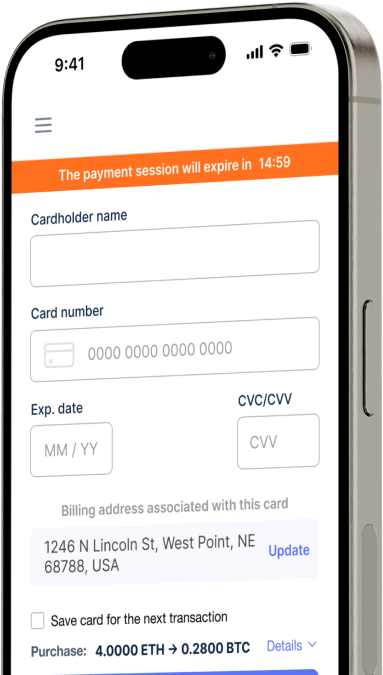Convertire
Polish Zloty (PLN) in Cartesi (CTSI) istantaneamente
Acquistate facilmente Cartesi (CTSI) con Polish Zloty (PLN) su Switchere e beneficiate di transazioni rapide e sicure.
Circa
Cartesi (CTSI)
Cartesi (CTSI) è una piattaforma infrastrutturale di Layer-2 progettata per risolvere il problema critico della scalabilità computazionale e degli alti costi sulle reti blockchain. Spesso definita "Il Sistema Operativo della Blockchain", il suo obiettivo primario è abilitare applicazioni decentralizzate (dApp) con una complessità che rivaleggia con le loro controparti centralizzate del Web2. Cartesi raggiunge questo obiettivo consentendo agli sviluppatori di creare contratti intelligenti e dApp all'interno di un ambiente completo di sistema operativo Linux, utilizzando linguaggi di programmazione e stack software tradizionali. Questo approccio abbassa significativamente la barriera d'ingresso per gli sviluppatori che passano dal Web2 al Web3, promuovendo un ecosistema di dApp più ricco e potente costruito su una robusta tecnologia blockchain.
Il nucleo della piattaforma è la Cartesi Machine (CM), una macchina virtuale deterministica che esegue calcoli intensivi off-chain. Sfruttando gli Optimistic Rollups, Cartesi può processare questi calcoli complessi esternamente, ancorando i risultati con sicurezza crittografica sulla blockchain di Layer-1 sottostante, come Ethereum. Questo modello ibrido offre l'immensa potenza di calcolo dell'elaborazione off-chain con la fiducia verificabile di un registro digitale on-chain. Il token di utilità nativo, CTSI, è parte integrante della tokenomics della rete. Viene utilizzato per lo staking all'interno della sidechain Noether Proof-of-Stake (PoS) di Cartesi, dove gli operatori dei nodi aiutano a proteggere la rete e guadagnano ricompense. CTSI funziona anche come metodo di pagamento per i servizi di calcolo e disponibilità dei dati all'interno dell'ecosistema.
Acquistare altre 150+ criptovalute per Polish Zloty (PLN)
Altre monete per Polish Zloty (PLN)
-
PLN per ZRX
-
PLN per 1INCH
-
PLN per AAVE
-
PLN per ACH
-
PLN per ALGO
-
PLN per TLM
-
PLN per ANKR
-
PLN per APE
-
PLN per NFT
-
PLN per API3
-
PLN per APT
-
PLN per ARPA
-
PLN per AUDIO
-
PLN per AVAX
-
PLN per AVAX
-
PLN per AXS
-
PLN per BADGER
-
PLN per BAL
-
PLN per BNT
-
PLN per BAT
-
PLN per BNB
-
PLN per BSW
-
PLN per BSV
-
PLN per BLUR
-
PLN per BONE
-
PLN per CTSI
-
PLN per CELR
-
PLN per CELO
-
PLN per CEL
-
PLN per LINK
-
PLN per CHZ
-
PLN per CHR
-
PLN per C98
-
PLN per COMP
-
PLN per CFX
-
PLN per PEOPLE
-
PLN per CVX
-
PLN per ATOM
-
PLN per CTC
-
PLN per CRV
-
PLN per DAI
-
PLN per DASH
-
PLN per MANA
-
PLN per DENT
-
PLN per DGB
-
PLN per DYDX
-
PLN per XEC
-
PLN per EOS
-
PLN per ETC
-
PLN per ENS
-
PLN per ETHW
-
PLN per FET
-
PLN per FIL
-
PLN per FLOKI
-
PLN per GALA
-
PLN per GNO
-
PLN per ONE
-
PLN per HBAR
-
PLN per HOT
-
PLN per HOOK
-
PLN per ICX
-
PLN per ILV
-
PLN per IMX
-
PLN per INJ
-
PLN per ICP
-
PLN per IOST
-
PLN per IOTX
-
PLN per JASMY
-
PLN per JST
-
PLN per KAVA
-
PLN per KCS
-
PLN per KSM
-
PLN per KNC
-
PLN per LDO
-
PLN per LQTY
-
PLN per LPT
-
PLN per LOOKS
-
PLN per LRC
-
PLN per LUNA
-
PLN per MKR
-
PLN per MASK
-
PLN per EGLD
-
PLN per ALICE
-
PLN per NEAR
-
PLN per XEM
-
PLN per NEXO
-
PLN per NOT
-
PLN per NMR
-
PLN per OKB
-
PLN per OMG
-
PLN per ONT
-
PLN per EDU
-
PLN per OP
-
PLN per OGN
-
PLN per CAKE
-
PLN per PAXG
-
PLN per PENDLE
-
PLN per DOT
-
PLN per POL
-
PLN per QTUM
-
PLN per QNT
-
PLN per RDNT
-
PLN per XRD
-
PLN per RVN
-
PLN per REN
-
PLN per RSR
-
PLN per RLC
-
PLN per RPL
-
PLN per SFP
-
PLN per SHIB
-
PLN per SKL
-
PLN per SXP
-
PLN per STND
-
PLN per STG
-
PLN per XLM
-
PLN per GMT
-
PLN per STORJ
-
PLN per STMX
-
PLN per SUSHI
-
PLN per SNX
-
PLN per USDT (Polygon)
-
PLN per USDT (AVAC)
-
PLN per USDT (BEP20)
-
PLN per USDT (ERC20)
-
PLN per USDT (SPL)
-
PLN per USDT (NEP141)
-
PLN per USDT (FA2)
-
PLN per USDT (TRC20)
-
PLN per USDT (JETTON)
-
PLN per XTZ
-
PLN per GRT
-
PLN per SAND
-
PLN per TFUEL
-
PLN per THETA
-
PLN per RUNE
-
PLN per TON
-
PLN per TUSD (BEP20)
-
PLN per TUSD (TRC20)
-
PLN per TWT
-
PLN per UOS
-
PLN per UMA
-
PLN per UNI
-
PLN per USDC (Polygon)
-
PLN per USDC (SPL)
-
PLN per USDC (OP)
-
PLN per USDC (BEP20)
-
PLN per USDC (AVAC)
-
PLN per USDC (ARB)
-
PLN per USDC (ERC20)
-
PLN per VET
-
PLN per VRA
-
PLN per WAXP
-
PLN per WOO
-
PLN per WLD
-
PLN per WBTC
-
PLN per WMINIMA
-
PLN per XDC
-
PLN per YFI
-
PLN per YGG
-
PLN per ZIL
Come acquistare gli Cartesi (CTSI)
Domande frequenti
-
Quali sono i metodi più comuni per acquistare Cartesi (CTSI) con lo Złoty polacco (PLN)?
Per acquistare l'asset digitale CTSI con PLN, si utilizza tipicamente un exchange di criptovalute che funge da rampa di accesso fiat. La via più diretta è trovare una piattaforma con una coppia di trading PLN/CTSI. Più comunemente, potrebbe essere necessario prima depositare PLN utilizzando metodi come un bonifico bancario (przelew bankowy) o un pagamento BLIK, acquistare una criptovaluta principale come USDT o BTC e poi scambiarla con CTSI sul book degli ordini dell'exchange. Assicurati sempre che l'exchange abbia una solida conformità KYC/AML.
-
Quale ruolo svolge il token CTSI nella side-chain Proof-of-Stake di Noether?
Il token CTSI è centrale per la sicurezza e il funzionamento della side-chain Noether di Cartesi. I detentori di token possono partecipare alla rete mettendo in staking i loro token CTSI per contribuire a proteggere la rete. In cambio dello staking e della partecipazione alla produzione di blocchi, ricevono ricompense in CTSI. Questo sistema Proof-of-Stake (PoS) non solo incentiva la detenzione del token, ma supporta anche la disponibilità e l'integrità dei dati per le soluzioni di scaling di Layer-2 di Cartesi.
-
In che modo l'uso degli Optimistic Rollups da parte di Cartesi fornisce una soluzione di scaling di Layer-2?
Cartesi sfrutta gli Optimistic Rollups per raggruppare grandi lotti di transazioni e calcoli complessi elaborati off-chain all'interno della sua VM Linux. Invia quindi un riepilogo compresso di queste transazioni alla mainnet di Layer-1 (come Ethereum). Il sistema presume 'ottimisticamente' che queste transazioni siano valide, ma fornisce un periodo di contestazione in cui chiunque può presentare una prova di frode per annullare le transazioni non valide. Ciò aumenta significativamente la velocità delle transazioni e riduce le commissioni sul gas per gli utenti, rendendo le dApp costruite su Cartesi altamente scalabili ed economiche.
-
Qual è la tecnologia di base di Cartesi che la rende unica per lo sviluppo di dApp?
L'innovazione principale di Cartesi è la Cartesi Machine, una macchina virtuale Linux autonoma e deterministica. Ciò consente agli sviluppatori di creare applicazioni decentralizzate utilizzando stack software e librerie tradizionali con cui hanno già familiarità, liberandosi dalle limitazioni dei linguaggi specifici della blockchain come Solidity. Questo permette di eseguire calcoli molto più complessi off-chain, che vengono poi integrati in modo verificabile con la blockchain principale, funzionando come un potente oracolo computazionale.
-
Ci sono rischi specifici per la sicurezza da considerare quando si esegue una transazione blockchain da PLN a CTSI?
I rischi principali sono universali per la maggior parte delle transazioni crittografiche. In primo luogo, utilizza un exchange di criptovalute affidabile e regolamentato per la tua rampa di accesso fiat per mitigare il rischio di controparte. In secondo luogo, quando prelevi CTSI su un portafoglio digitale personale, controlla sempre due volte l'indirizzo del portafoglio per verificarne l'accuratezza, poiché le transazioni blockchain sono irreversibili. Abilita l'autenticazione a due fattori (2FA) sul tuo account dell'exchange per una maggiore sicurezza. Infine, fai attenzione alle piattaforme P2P in Polonia se non utilizzi un servizio di deposito a garanzia (escrow), poiché le truffe possono essere prevalenti.
-
Quali sono le commissioni tipiche associate all'acquisto di CTSI con PLN su un exchange di asset digitali?
Quando si acquista CTSI con Złoty polacchi, ci si possono aspettare diverse commissioni potenziali. In primo luogo, potrebbe essere applicata una commissione di deposito a seconda del metodo utilizzato (ad es. BLIK rispetto a un bonifico bancario standard). In secondo luogo, l'exchange addebiterà una commissione di negoziazione, spesso una percentuale del valore della transazione, che può differire per i 'maker' e i 'taker' del mercato. Infine, se sposti i tuoi CTSI su un portafoglio digitale privato, dovrai sostenere una commissione di prelievo, che copre la transazione blockchain (commissione sul gas) e una piccola commissione di servizio dell'exchange. Controlla sempre il tariffario della piattaforma scelta.




